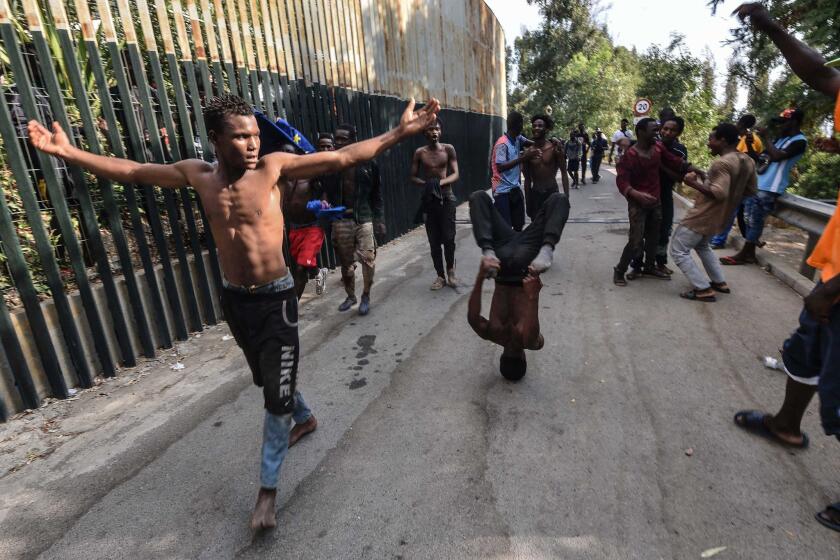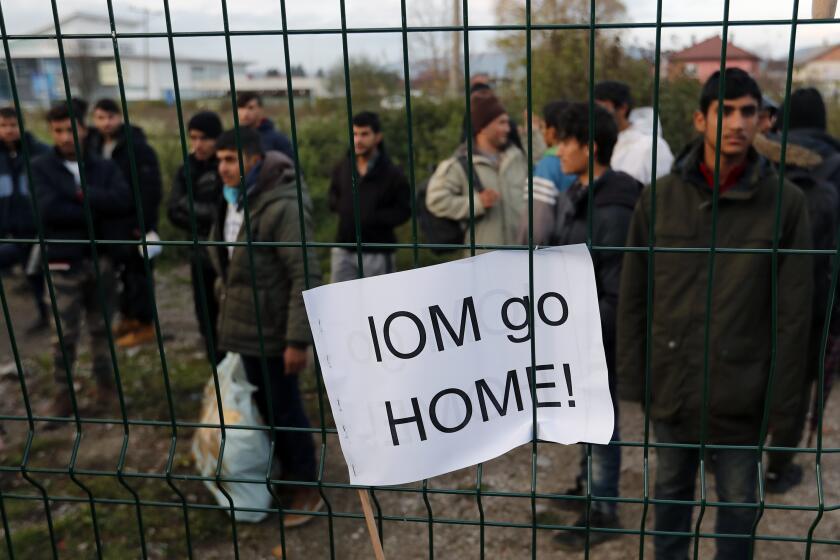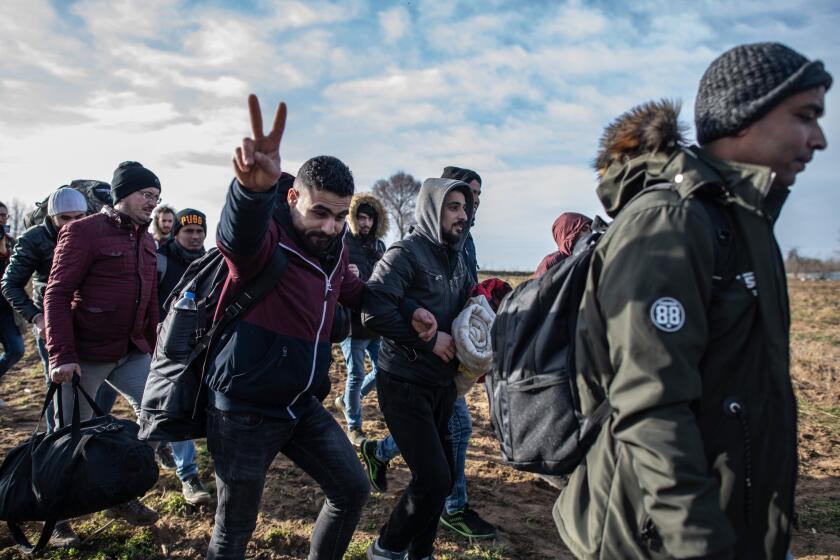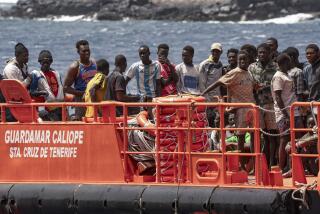More and more migrants heading for Europe try treacherous new Atlantic crossing
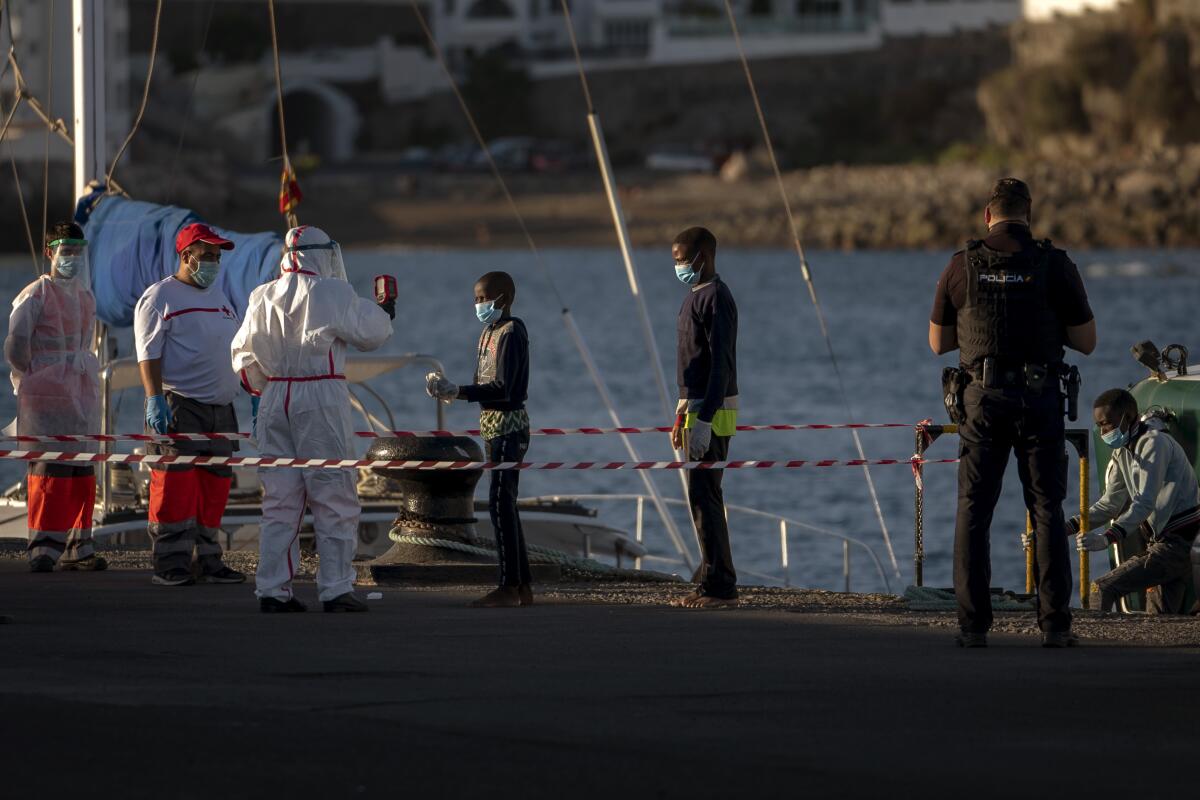
FUERTEVENTURA, Spain — Migrants are increasingly crossing a treacherous part of the Atlantic Ocean to reach the Canary Islands, a Spanish archipelago near West Africa, in what has become one of the most dangerous routes to European territory.
About 4,000 people have survived the perilous journey this year. But more than 250 others have died or gone missing, according to the International Organization for Migration. That’s already more than the number of people who perished trying to cross the Western Mediterranean in all of last year.
In the week that the Associated Press spent in the Canary Islands to report this story, at least 20 bodies were recovered.
The increase in traffic to the Canaries comes after the European Union funded Morocco in 2019 to stop migrants from reaching southern Spain via the Mediterranean Sea. While arrivals to mainland Spain decreased by 50% compared to the same period last year, landings in the Canary Islands have increased by 550%.
In August alone, there were more than 850 arrivals by sea to the Canaries, according to an AP tally of numbers released by Spain’s Interior Ministry and reports by local media and NGOs.
Hawa Diabate was fleeing her native Ivory Coast by boat with her 2-year-old daughter, Noura, to what she believed was Continental Europe. The only person who wasn’t crying on the boat was Noura.
Late last August, 300 sub-Saharan migrants ran from the hills above this small Spanish enclave on the northern coast of Africa and stormed the 20-foot-high barbed-wire fence separating Spain from Morocco.
Unlike the 60 adults on board, only the toddler was oblivious to the risks of crossing the open waters of the Atlantic in an overcrowded rubber dinghy.
As the waves quickly got bigger and people more nervous, Noura told her mother, “Be quiet, mama! Boza, mama! Boza!” Diabaté recalled. The expression is used by sub-Saharan migrants to celebrate a successful crossing.
After several hours in the ocean, it was finally “Boza.” Spain’s Maritime Rescue Service brought them to safety on one of the Canary Islands.
Arrivals this year are still low compared to the 30,000 migrants who reached the islands in 2006. But they are at their highest in over a decade since Spain stemmed the flow of sea arrivals to just a few hundred a year through deals with West African countries.
Doctors Without Borders is warning that migrants trying to reach Western Europe are living in “dangerously cold and harsh conditions” in Bosnia.
The striking shift in migration back to the Canaries has raised alarms at the highest levels of the Spanish government. Prime Minister Pedro Sanchez’s first trip abroad following his country’s pandemic lockdown was to Mauritania, one of the main departure points. Most recently, the Spanish Interior Ministry announced a donation of $1.8 million in border surveillance equipment to six West African countries.
But human rights organizations say those arriving on Spanish shores are only a fraction of those departing.
“We are only seeing the tip of the iceberg,” said Sophie Muller, the United Nations High Commissioner for Refugees’ representative in Spain, who recently visited the archipelago. “They are taking impossible routes.”
It can take one to 10 days to reach the Spanish islands, with the closest departure point being Tarfaya, Morocco, which lies 62 miles away, and the furthest recorded this year being Barra, in The Gambia, more than 1,000 miles away. It is common for migrants to run out of food, water and fuel after only a few days.
Breaking News
Get breaking news, investigations, analysis and more signature journalism from the Los Angeles Times in your inbox.
You may occasionally receive promotional content from the Los Angeles Times.
On Aug. 19, 15 lifeless Malians were spotted inside a wooden boat by a Spanish plane 92 miles from the island of Gran Canaria; the boat was towed back to port. At nightfall, workers pulled the bloated corpses, one by one, out of the vessel with a crane. The next day, police collected what was left behind as evidence: a wallet, a dozen cellphones, windbreakers and waterproof boots.
Less than 24 hours later, another migrant boat was rescued and brought to the island with 12 people and four dead, as the AP watched. The survivors had seen their comrades die along the way.
“They almost didn’t speak,” said José Antonio Rodríguez, who heads the regional Red Cross immediate response teams. “They were in a state of shock.”
One of the 12 rescued died before he could reach a hospital.
After Turkey announced it was easing restrictions on crossing into Europe, people have massed along its western border.
Human rights organizations aren’t just concerned by the high number of deaths.
“There’s been a change in profile,” said Muller, the UNHCR representative. “We see more arrivals from the Sahel, from the Ivory Coast, more women, more children, more profiles that would be in need of international protection.”
Spain’s Interior Ministry denied requests to disclose the nationalities of recent arrivals to the Canary Islands, saying that the information could impact international relations with the countries of origin. UNHCR estimates that around 35% of those arriving by boat come from Mali — a nation at war with Islamic extremists, and where a coup d’etat recently toppled President Ibrahim Boubacar Keita. About 20% of arrivals are women and 12% under 18, Muller said.
Kassim Diallo fled Mali after his father was killed in an extremist attack on an army base near his village in Sokolo in late January.
On Feb. 29, the 21-year-old boarded a rubber boat in Laayoune, in the Western Sahara, with 35 other men, women and children. After nearly 20 hours in the water, his group was rescued and brought to the island of Fuerteventura.
They gathered in a snowy forest dressed in their menacing best: combat fatigues and military-style boots, their faces obscured by ski masks.
“It is not normal. A human being shouldn’t do this. But how else can we do it?” said Diallo.
Like most of those who crossed by boat to the archipelago this year, Diallo has been stuck on the islands for months. Although repatriation flights to Mauritania have been halted by the COVID-19 pandemic, the Spanish government has also forbidden newly arrived migrants from going to the mainland, even after travel restrictions were lifted for nationals and tourists. Only a few groups, mainly women and children, have been transferred on an ad hoc basis via the Red Cross.
“Blocking people from leaving the Canaries has turned the islands into an open-air prison,” said Txema Santana, who represents the local office of the Spanish Commission to Help Refugees.
More to Read
Sign up for Essential California
The most important California stories and recommendations in your inbox every morning.
You may occasionally receive promotional content from the Los Angeles Times.
